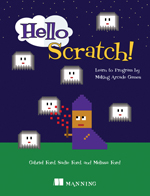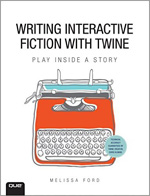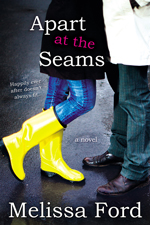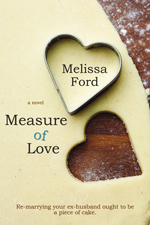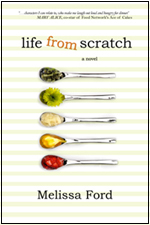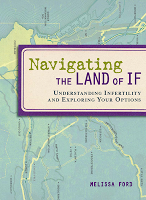DIY MFA: Working with an Editor (Part Nine)
Welcome back to your Do-it-Yourself MFA program.
I’m really not sure what happens when you self-publish, so hopefully someone can chime in on the comment section below. This installment will be about working on a piece of non-fiction or fiction with your editor. Everything from the signing on the contract to publication day.
First we need to go back to those terms and define some roles. You are going to be working with an editor and a publisher. Sometimes, they are one and the same person, but they’ll be doing two very different jobs with you. An editor is working with you to tighten (or produce) the content. They will be looking at ideas, character development, tone, pace–and they may also do a little line editing. The publisher–the person who acquired your manuscript–is more in charge of the life of the book after it’s done. They were the ones who negotiated with your agent and know the details of the deal, and they’re also the ones who are thinking about marketing and how well the book will do in sales. You will also work with a book designer and a copyeditor, though your relationship with them will likely be through your editor or publisher. You will also work with a book publicist, brainstorming ideas based on your contacts and their reach.
I asked an associate editor at a Big Six Publisher about the various jobs associated with the creation of a book and he says,
Your editor is your point-person at the publishing house. The first thing he is going to do is work with you on shaping your manuscript. Depending on the book, the editor may do A LOT of line editing, and the publisher may be involved from the first step. Part of a goal of a big publishing house is to get the whole house behind it, so that Marketing, Publicity, and Sales all strive to make your book the one that breaks out of the morass on the shelves. Your publisher works with all of the departments to position your book, which can often be something as simple as “People who read Jodi Picoult will want to read this, so let’s see how Jodi Picoult is marketed, designed, and publicized, and we’ll try to copy that.” The sheer number of people who will help bring your book to the shelves at a big publishing house would rival the end credits of a movie, and one of the biggest advantages of a publishing house is that every person in the process believes that they are integral, rightly so. Someone is actually putting a lot a lot a lot of thought into the trim of your book, into what font to use, into the running heads (those bits at the top of the page that say your name on one page and the title of the chapter / book on the other). It helps.
With fiction, the manuscript is complete, but you’ll still do an edit. Or two. Or maybe even more. I had my Big Six associate editor explain:
You’ll do however many edits the publisher / editor requires to feel safe in the belief that they are going to be putting the best possible product into the marketplace. One of the biggest mind-leaps for an author is that while their manuscript is a work of art, once they sign a contract with any publishing house, big or small, it is also a commodity, and a good relationship with your editor / publisher will maintain that sense of the artistic throughout, there are always considerations as to how the novel will spotlight itself in the marketplace. In other words, when you finish a manuscript, figure out the hills to die upon. If changing the ending would make your book no longer yours, bring this up to the editor / publisher who is going to buy the book. You should definitely be able to have a conversation before the contract is signed, and you want to make sure that you have the same artistic vision as the people who will be adding a marketing and publishing vision to it. If every word is sacred and you’re going to bristle at editorial guidance, whatever the reason, self-publish, and hire a freelance marketer and publicist.
In other words, the point is to tighten up the manuscript and take it to its best possible place, which is why I’ve said several times that there is a big difference between writing a book and publishing a book. While books are obviously about the story or the information contained within (in other words, the content), publishing is about the marketability of the book. About getting it into the right hands.
After the manuscript is complete, you will receive back a series of pages called proofreading and copyediting pages, but we’ll talk more about that below with non-fiction. You’ll also be asked to think about and approach other authors for book blurbs at this point, which are those small quotations that publishers slap on the cover of the book.
With non-fiction, you’ll start working on the chapters and you’ll probably create an outline with your editor to make sure that you not only have time to write the chapters, but you have time to edit them too. Don’t be surprised if your publisher hires an independent editor to work with you. This isn’t unusual with small presses that have small staffs. You should have good communication with your editor and take deadlines seriously (because they can’t do their job if you don’t do yours). After the manuscript is complete and turned in, you’ll also wait for the next step (proof-reading and copyediting) as well as pulling together those book blurb people.
Our associate editor points out the most important thing to remember: to hit your deadlines.
Take deadlines as serious as a grease fire. If you sign a two-book contract, you will have a date in that contract for when the second book is due to the publisher. You want to make sure you can meet that deadline before you sign, because a publisher will hold you to it, and can cancel the contract if you do not. It is vital that every author anticipates how much time they will have to write (keeping in mind that, while you are writing book two, you will be publicizing book one) so that you never, ever, ever miss a deadline.
You will receive bound galleys from your publisher, which are a draft of the book layout, usually without the final cover in place. You will also usually receive unbound pages that show the final layout of the book. This will give you a chance to correct any mistakes that came with the layout as well as catch more type-os and grammatical errors. Your publisher will have a formal way they want you to edit which will be a balance of reading the pages yourself as well as answering queries from the proofreader.
Those galleys will also go out to those authors who are blurbing your book, and sometimes to reviewers instead of printing a separate “advance reading copy” or ARC. It all depends on the finances or protocols of the publisher.
Usually, you’ll go through one or two proofs (also called first pass and second pass). The second proof is the final proof–meaning, you’ll check that all of your first corrects were made, you’ll search for any other errors, and then the manuscript is out of your hands. This is where you’ll also see how the final pages look–any graphics or sidebars or tiny icons should all be on these pages. Once you send back your notes, you’ll wait until you get your copies of your book in the mail. Some publishers will only send the first proof, so there is only a single chance to catch and correct all the small mistakes.
Er … wait … there’s also the cover. Most publishers will ask the author a few questions to get a sense of what you envision in the cover design. The bottom line is that they want you to be happy with your cover. But you’re also not a marketer and they have had experience picking covers that catch someone’s eye. Therefore, it will be somewhat of a collaborative process, with your feelings taken into consideration, but ultimately, the book designer creating the cover.
Most publishers will listen and make tweaks (and in some cases, go back to the drawing board) if the author isn’t happy with the cover. This is a place where your agent should help with the negotiations (remember, this is the person who always has your back). Our associate editor states,
Your agent earns his or her percentage not by selling your book to a publishing house, but by representing your business interest. That includes the cover, the marketing, and every other business-related aspect of your book. If you have a concern or question, the best person to speak through is your agent. Think of it like you would an attorney. If you are having a legal dispute, and you’ve hired an attorney, you’re going to let that attorney be your mouthpiece, no? If you have concerns about the cover, they should go through the agent. You should be focused on the artistic endeavor of writing and revising, which you should be doing with your editor. The agent should handle virtually all other matters with the house.
Ultimately, the final cover design is in the hands of the publisher.
So one day, you will get a box with copies of your book. You will hold your book and cry, thinking about the whole journey from idea to holding it in your hands. You’ll drop the book in your bag and show it to all your friends. And soon after that, the book will be sent out via online booksellers or on the shelves of bookstores. But before all of that, the marketing part begins…
Okay class, any questions on what was discussed here? Please leave them in the comment section below and I will answer them in the comment section below. Keep in mind that I have a lot of topics to cover so your question may be answered in a future installment (see below). So keep your questions about working with an editor and publisher.
Heads Up and Looking Back: topics that will be covered in future installments or that were covered in past installments
1. Before You Even Get Started
2. Are You Ready to Be an Author?
3. How to Write a Non-Fiction Book Proposal
7. What Happens Next–Waiting for a Book Sale
8. Self-publishing and Self-representation
9. THIS POST
10. Be Your Own Publicist
11. A Mishmash of Leftover Questions and Answers






